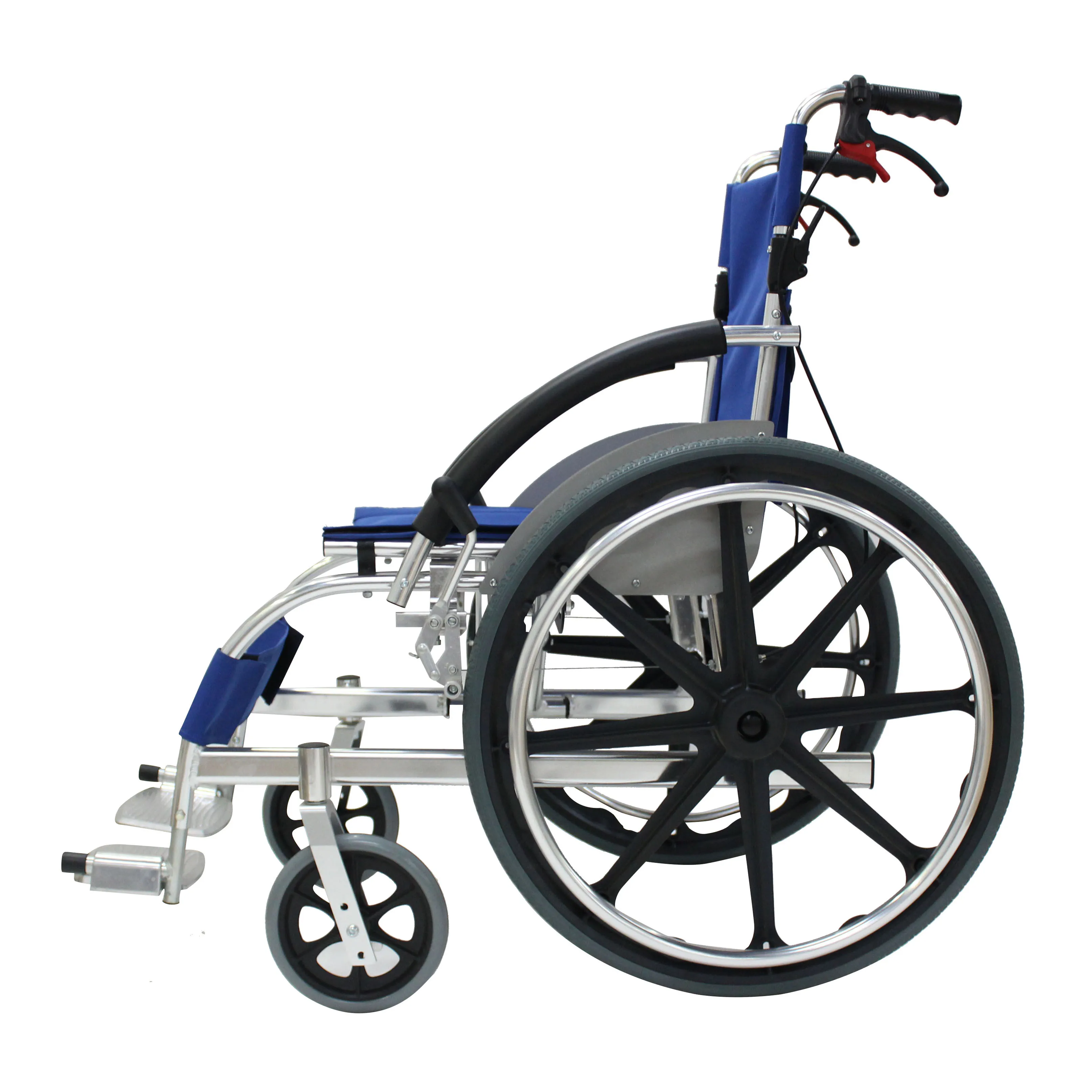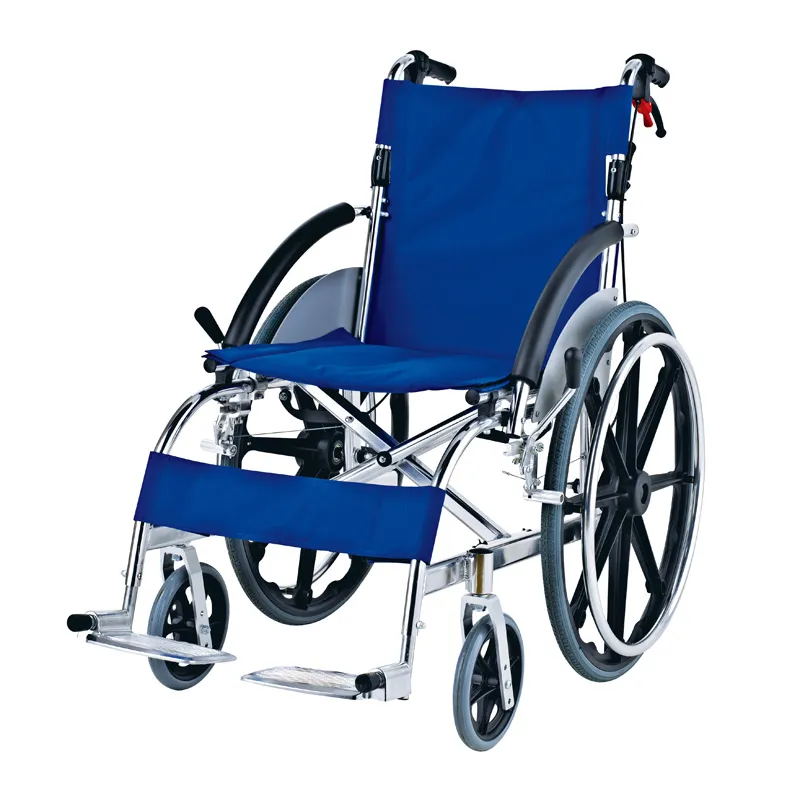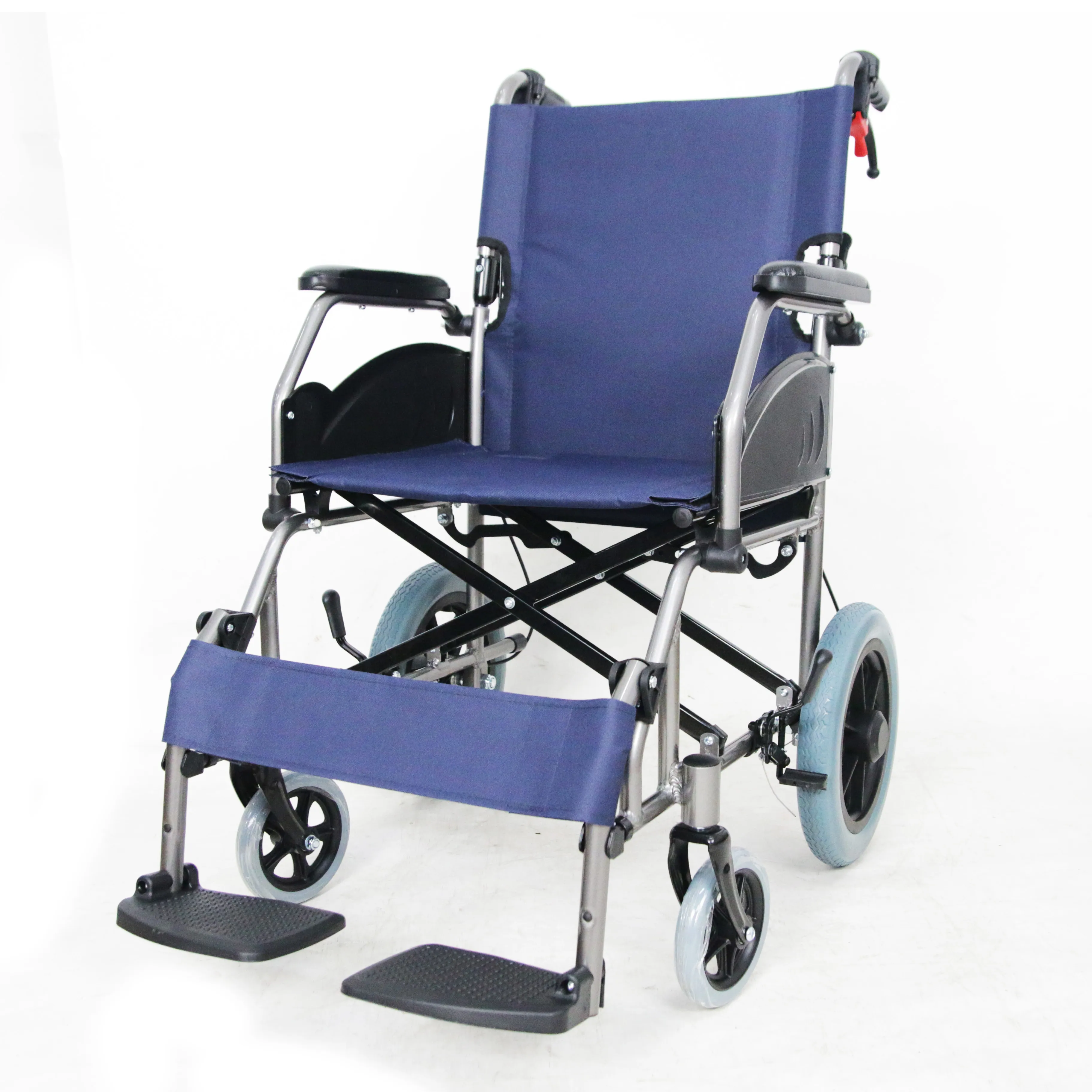With the aging population, manual wheel chairs, as one of the most common mobility aids, are increasingly used in hospitals, homes, and nursing homes. Despite their similar appearance, one of the key factors determining the performance and user experience of a manual wheelchair is its material.
The material of a wheelchair not only affects its weight, load-bearing capacity, durability, and comfort, but also directly determines the user's daily activity radius and ease of care.
Among the many materials, aluminum and steel manual wheel chairs are the two most mainstream categories on the market. They each have their advantages and significant differences.
This article will systematically analyze the common materials used in manual wheelchairs to help readers make a more informed choice.

What are the material classifications for manual wheelchairs?
Currently, the mainstream materials for manual wheelchairs on the market can be divided into the following categories:
Material Categories | Representative Products | Typical characteristics |
| Steel (carbon steel, stainless steel) | General-purpose hospital wheelchairs, heavy-duty manual wheelchairs | Strong, durable, low cost, heavy weight |
Aluminum alloy | Light manual wheelchairs, folding wheelchairs | Lightweight, corrosion resistant, moderate price |
| Titanium alloy | High-end sports wheelchairs | Extremely light, high strength, expensive price |
| Carbon fiber composites | High-end custom wheelchairs | Ultra-light, impact resistant, extremely high price |
| Magnesium alloy (emerging) | Some high-end folding wheelchairs | Lightweight, oxidation resistant, complex manufacturing process |
Among them, aluminum and steel manual wheelchairs cover over 70% of the market share, especially in public healthcare systems, home care, and daily commuting.
Steel Manual Wheelchairs: A Sturdy and Traditional Choice
✅ Advantage 1: Stable Structure and High Load-Bearing Capacity
Steel manual wheelchairs are widely used in hospitals, nursing homes, and long-term care facilities due to their sturdiness and durability.
· The frames are mostly welded from carbon steel or stainless steel, offering strong bending resistance;
· Generally, they can support 120–150 kg, with heavy-duty models exceeding 200 kg;
· They are not easily deformed, making them suitable for heavier patients or those completely dependent on caregivers.
Director Wang of the Hospital Equipment Management Department stated, "Steel manual wheel chairs are our primary purchase choice because they are durable, easy to maintain, and suitable for almost all patients."
✅ Advantage 2: Relatively Affordable Price
· For equivalent functionality, steel manual wheelchairs are generally 20%–40% cheaper than aluminum models;
· Entry-level steel manual wheelchairs typically cost between $150 and $400, suitable for those with limited budgets;
· Simple structure, readily available spare parts, and low maintenance costs.
✅ Advantage 3 of Steel Wheelchairs: Suitable for High-Frequency Public Use
· Lower center of gravity, stable to push;
· Suitable for high-traffic areas such as emergency rooms, rehabilitation departments, shopping malls, and airports;
· Some models are equipped with large rear wheels and double brakes for easy operation by caregivers.
⚠️ Disadvantage 1 of Steel Wheelchairs: Relatively Heavy, Inconvenient to Carry
· Generally, manual steel wheelchairs weigh between 18 and 24 kg;
· Very inconvenient for users who commute independently or need to frequently load and unload into vehicles;
· Large folding size, unsuitable for the trunk of small cars.
⚠️ Disadvantage 2 of Steel Wheelchairs: Prone to Rust and Poor Corrosion Resistance
· Although some parts are made of stainless steel, there is still a risk of rusting in high-humidity environments;
· Improper maintenance can easily lead to corrosion of hinges, bearings, and brake components;
· Requires regular cleaning and rust prevention treatment, especially in southern or coastal areas.
⚠️ Three drawbacks of steel wheelchairs: Weak comfort design
· Mostly standard structures, lacking adjustable backrests and breathable seat cushions;
· Seat cushions and armrests are too firm, resulting in poor comfort during long journeys;
· Usually lacks shock absorption design, leading to noticeable bumps when traveling outdoors.

Aluminum manual wheelchairs: A lightweight and flexible modern trend
✅ One advantage of aluminum wheelchairs: Lightweight and portable, suitable for daily travel
The biggest advantage of aluminum manual wheel chairs is their significant lightweight characteristics.
· High-quality aerospace-grade aluminum alloy material reduces the overall weight to 10–15 kg;
· Women or the elderly can easily carry and store them independently;
· Compact when folded, easily fitting into the trunk of a regular car or the carry-on baggage area of an airplane.
A young user told reporters, "My aluminum manual wheelchair is very light. When my friends take me out, I don't have to lift it at all."
✅ Advantage Two of Aluminum Wheelchairs: Strong Corrosion Resistance, Adaptable to Various Climates
· Aluminum alloy itself has excellent oxidation resistance;
· Most surfaces are anodized, making them resistant to rust;
· Suitable for users in humid environments, frequent rain and snow, or coastal cities.
✅ Advantage Three of Aluminum Wheelchairs: Ergonomic Design, Flexible Configuration
· Most aluminum manual wheelchairs support backrest angle adjustment and footrest height adjustment;
· Equipped with padded armrests, breathable seat cushions, and PU non-slip tires;
· High-end models are equipped with shock absorption systems and shock-absorbing airbags, making them more suitable for outdoor use.
⚠️ Disadvantage One of Aluminum Wheelchairs: Higher Price
· Compared to steel manual wheel chairs, aluminum models are generally 30%–60% more expensive;
· Ordinary aluminum manual wheel chairs range in price from $400 to $900;
· Some branded products exceed $1000, which is a significant burden for families with limited budgets.
⚠️ Disadvantage 2 of Aluminum Wheelchairs: Slightly Inferior Load-Bearing Capacity
· Standard aluminum manual wheelchairs can bear a weight of 100-120kg;
· Although some reinforced models exist, their strength is still inferior to steel frames;
· Not recommended for long-term use by users who are overweight (>130kg).
⚠️ Disadvantage 3 of Aluminum Wheelchairs: Relatively High Repair Costs
· Replacing damaged high-grade aluminum alloy parts is expensive;
· Some custom structures are difficult to replace parts at ordinary repair shops;
· In the event of a strong impact, aluminum tubing may crack rather than bend, making repair more difficult.

Aluminum Manual Wheelchairs vs. Steel Manual Wheelchairs: Comparison Table
Comparison Dimensions | Aluminum Manual Wheelchair | Steel manual wheelchair |
| Weight | Light (10–15kg) | Weight (18–24 kg) |
| Folding Portability | Excellent | Poor |
| Corrosion Resistance | Strong | Weak |
| Load Capacity | Medium (<120kg) | High (up to 200 kg) |
| Usage Scenarios | Suitable for daily outings and independent commuting | Hospitals, nursing homes, heavy users |
| Ergonomic Design | More comfortable, flexible configuration | General use, average comfort |
| Price | High-end | Low to medium |
| Maintenance Ease | Standard | Easy to use |
| Aesthetics | Stylish and simple | Slightly bulky |
Aluminum Manual Wheelchairs vs. Steel Manual Wheelchairs: How Should Different Groups Choose?
User Types | Recommended Materials | Reasons |
Independent users who need to go out frequently | Lightweight and portable, high comfort | |
Overweight users who require assistance from caregivers | Stable load-bearing capacity, strong safety | |
| Elderly users with mobility issues who need short-distance mobility aids | Aluminum Manual Wheelchair | Easy to operate, high flexibility |
| Hospital bulk purchasers | Steel Manual Wheelchair | Low cost, strong durability |
| Residents of humid coastal cities | Aluminum Manual Wheelchair | Superior antioxidant properties |

Can Dayang Medical support customized branding?
Yes, we provide full OEM and customized services for international customers. Many mobility equipment brands purchase from our factory and sell under their own labels. Our design teams can adjust wheelchair specifications, logos, packaging, and product features according to client needs.
By working with us, you are not only getting a manufacturer from China, but also a partner who supports wholesale promotions, competitive prices, and personalized solutions for your business.










